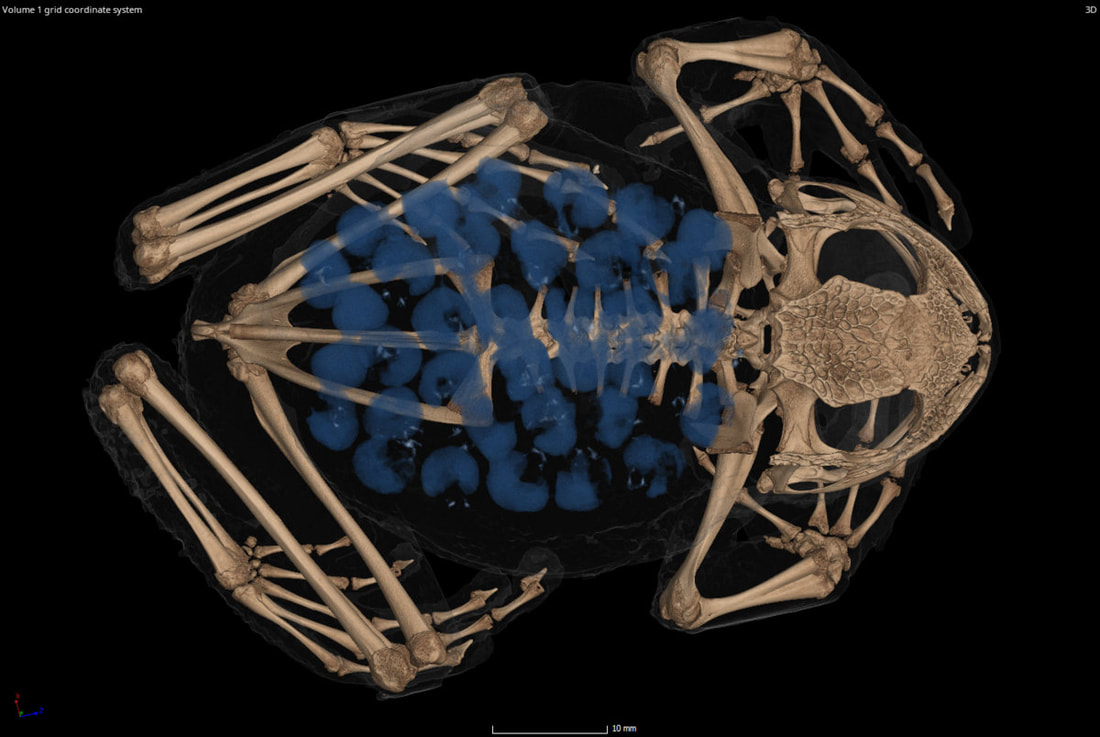
 Two years ago we reported on the discovery of two new species of terrestrial breeding frogs, Pristimantis antisuyu and P. erythroinguinis from Manu National Park in Cusco and Madre de Dios, in the Amazonian Andes and foothills. This month we add another closely related species, also with cruciform eyes, from another protected area: El Sira Communal Reserve. The description, led by our collaborator Germán Chávez, was published in the last issue of the online journal Evolutionary Systematics. The name of the new species, Pristimantis sira, honors the protected area. Although P. sira shares several morphological characteristics with P. antisuyu, P. cruciocularis, and P. erythroinguinis, it can easily be distinguished by the lack of inguinal spots, which vary from yellow to red in the other species. We observed P. sira on leaves, at 1–1.7 m height, in the forests of the eastern slopes of the mountains of El Sira Communal Reserve, from 1500 to 2200 m a.s.l.The habitat at 1500 m a.s.l. is a montane forest, with riparian vegetation consisting mainly of bushes, tree ferns and trees with a canopy ~20 m tall (see pics below). El Sira Communal Reserve is located on the eastern slopes of the Andes in central Peru, and protects about 616 thousand hectares of primary forest. El Sira is the highest cordillera adjacent to the Ucayali River, going from 200 m to 2200 m a.s.l., and is bordered by the Pachitea river (which eventually flows into the Ucayali), further isolating the El Sira mountains as the eastern branch of the Andes in the Ucayali basin. Because of the difficult access and rough topography, El Sira is likely one of the most unexplored places of Peru, and likely to harbor additional species waiting to be discovered and named.
0 Comments
Earlier this morning, lab member and PhD student Anne Sabol passed her quals - congratulations Anne!
Marsupial frogs are fairly diverse in the Andes, with over 75 species of Gastrotheca, and there are many cryptic species yet to be discovered. Our lab contribution, in collaboration to leading author Pablo Venegas, led to the discovery of a new species from the Cordillera de Colán in northern Peru. The new species, named Gastrotheca gemma lives in the páramo and the ecotone between páramo and humid montane forest of Cordillera de Colán, at elevations around 3100-3200 m.  The new species is distinguished from all its congeners by the combination of the following characters: coarsely granular skin on dorsum, a green dorsal coloration without pattern, finger I shorter than finger II, turquoise iris, and a venter without blotches, flecks or dots. Furthermore, we include a detailed osteological description of the new Gastrotheca species based on Micro-CT scanning (see photo above). The paper is published in the online journal Vertebrate Zoology. |
Archives
June 2024
CATENAZZI LABNews from the lab Categories |


 RSS Feed
RSS Feed